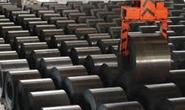Distributors/Service Centers

November 6, 2016
Ryerson CEO: Demand is the Joker in the Deck
Written by Sandy Williams
Inventories, and whether they are too tight right now, have been a topic of discussion lately. Eddie Lehner, CEO of Ryerson Holdings commented on this during the Ryerson earnings call last week.
In his prepared remarks Lehner said, “Notwithstanding, the decline of CRU carbon sheet prices from a peak late in the second quarter of $637 per ton to $473 per ton at the end of October, signs of supply side price stabilization are emerging, whereas, the supply side was the greater of the twin problems causing price deflation and shipping contraction year ago, demand is the joker in the deck this time around as the industry shipments have continue to decline despite industrial base metals prices trending higher since bottoming during the fourth quarter of 2015.”
Lehner agreed that inventories at service centers are tight and getting tighter and might be considered “short sighted,” but added “inventories are just aligning demand.”
“If you look at MSCI inventories back in late 2013, they got out 1.8 months, 1.9 months. Even at 2.3 months – 2.4 months right now, adjusting to lower level demand inventories wouldn’t seem to be so tight.
“Now the other point I would make is that there’s still a lot of inventory in the channel and I think that’s something that’s overlooked and that is even if lead times go out, if we take recent data points from the various mills, where lead times have gone from virtually nothing in September and maybe three weeks or four weeks now on garden-variety HRC, there’s still a lot of inventory critically carbon in the channel.
“So you can buy out and you get access to inventory as you reposition inventories in Q4 and they you can make a decision about Q1 and still have time to do that during the pretty slow in December and the first half of January. So I think there’s time to form an opinion. There is time to form a position around inventory. And there is enough inventory in the channel right now, relative to demand that nobody has to act as if they have a gun to their head. So I think it’s a good time to position smartly. And there is a case to be made that prices will go up, mostly based on global cues, but prices will go up and firm.”
When asked about buyers “sitting on their hands” in third quarter due to Q2 price hikes and concern about the election, Lehner responded that “all these factors could impact a view of staying neutral or short.”
“The bigger issue is when you really step back from all the short-term indicators you still exist in a world with surplus capacities and basic materials and industrial metals and so as long as you can get that material within a serviceable window for your customers and there is a lot of places where you can go to get it, do you really have to take a long position unless the backlogs and your customers really start to go out. And then you’re really building your inventory position to coincide with lead-times, plus a delivery time buffer plus the transportation piece.
“So we’ve always maintained that when you want to look at inventory position look at mill lead-times for the product you’re buying, put some delivery buffer based on whether they deliver on time or not and then add seven days for transportation and receiving into your facility. So demand isn’t strong enough right now to really, I think, move somebody from a short to neutral position right now.
“And so some of those other factors, though, could be impacting people’s view as to whether they import more, or whether they are more aggressive in going beyond a neutral position, but in Q4 and moving from Q3, I don’t think there is a really strong case to be made for moving from a short to neutral position.”
On the subject of the Vietnam circumvention case, Lehner expressed uncertainty on the outcome, citing strong claims on both sides. He added that offers from Vietnam have diminished.





